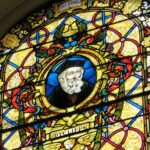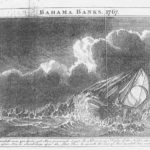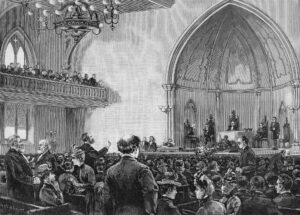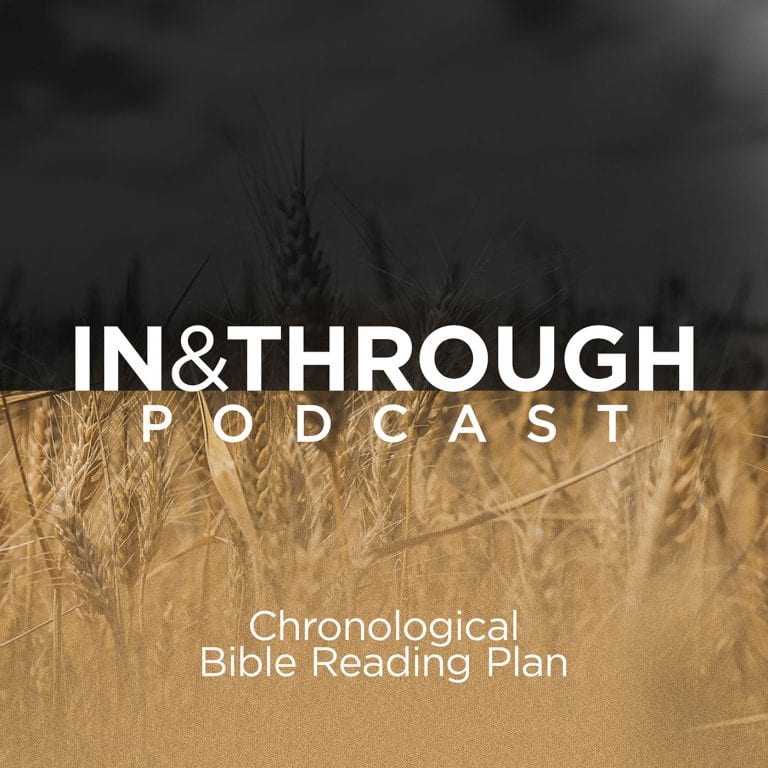In Two Worlds: The Protestant Culture of Nineteenth Century Ontario, William Westfall recounts the captivating story of how Ontario was once a bastion of a distinctive and dominant Protestant culture that shaped both the life and landscape of the province. If you are unfamiliar with this history, I highly recommend getting acquainted with it. Christians in Ontario have a remarkable heritage to tap into and learn from, especially as we seek to minister to an increasingly disinterested or even antagonistic world today.
Lesser known still, taking place simultaneously with the events chronicled in Westfall’s book and contemporaneous to the culture-shaping activities of figures such as Egerton Ryerson and John Strachan, another major aspect of Ontario’s church history was unfolding.
Fleeing slavery in the United States, Ontario became the destination point for many African Americans travelling the “Underground Railroad.” Led by brave men and women, such as Harriet Tubman, these enslaved people came to Canada in the thousands and, as a result, entire communities were formed. While these stories, when discussed, are rightly cast in the light of great moral and humanitarian victories for Ontario, it is easy to neglect the essential role that faith, specifically evangelical Christianity, played in this history.
At the heart of every major runaway community formed in nineteenth-century Ontario was an African Methodist chapel
At the heart of every major runaway community formed in nineteenth-century Ontario was an African Methodist chapel. The African Methodist Episcopal Church (AMEC), the denomination in which these chapels typically found their origins, was created in America in 1816 by Richard Allen, a former slave who became a devout Methodist preacher. The objective of this new denomination was to provide a space for enslaved and freed African Americans to continue in the evangelical faith pioneered by John Wesley while distancing themselves from the racial discrimination often found in the mainstream Methodist Episcopal Church.
Turning back to Ontario, the chapels which formed the bedrock of runaway communities were either quick to join the AMEC if founded before 1816 or were founded directly as AMEC chapels if established after the creation of the denomination.
The African Methodist chapels were truly the glue which held these communities together. These were the spaces where, after the trauma and horror of slavery and flight, African American and Canadian believers could find healing and hope. The chapels were places where, after generations of bondage and disenfranchisement, runaway slaves could finally experience freedom and raise families. Today, many of these chapels are still scattered across our province and provide physical evidence of the positive role that the Bible, evangelical spirituality, and the Christian religion at large played in the story of Ontario’s formerly enslaved black people.
The African Methodist chapels were truly the glue which held these communities together.
Here are four of the most notable African Methodist chapels that you can visit in Ontario:
1. The Salem Chapel
Founded in St. Catharines, this chapel might be the most famous of all the historic African Methodist churches in Ontario. Growing out of an AMEC society dating back to the 1810s, it was originally named Bethel Chapel. Like many other African Methodist chapels in the 1850s, after the passing of the 1850 Fugitive Slave Act which added another significant layer of danger for black Canadians travelling to the United States, the chapel joined the new British Methodist Episcopal Church, another distinctly African Canadian Methodist denomination. What makes this chapel especially significant is that during the 1850s, this was the home church of Harriet Tubman, who lived in St. Catharines for nearly a decade. Today, the church still serves as a place of worship for a small congregation and also as a museum bearing witness to the prominent role that Harriet Tubman and the Salem Chapel played during the heyday of the Underground Railroad.
2. Oro African Church
Built in 1849, this church housed an African Methodist community with a history dating back to the War of 1812. After fighting for the British against the Americans as part of the “Company of Coloured Men,” several black veterans and their families were granted land and sponsored by the government to start a black community in Oro, Ontario. Between 1830 and 1850, dozens of fleeing African American families joined this community, resulting in the construction of this church at the centre of their concession. For many decades, this chapel was an incredibly important meeting place for the African Canadians in Oro, especially as it was deeply connected to their roots as United Empire Loyalists and runaway slaves. However, by the end of the 20th century, many of the original black families had emigrated out of Oro searching for work and community in towns with larger black communities, today the chapel still stands on a beautiful, albeit out-of-the-way, plot of land which is well maintained as a museum.
3. Steward Memorial Church
Unlike the previous two chapels, the Steward Memorial Church is still very much home to a vibrant worshipping community. Originally founded in Hamilton as St. Paul’s AME Church, this church has a history dating back to the 1830s as another destination for runaway slaves travelling north on the Underground Railroad. Over the decades, Steward Memorial would be home to many notable African Canadians, such as the church’s first pastor, Josiah Henson, and a later pastor John Christie Holland—the first black person to win a citizen of the year award in a major Canadian city. Though the name has changed, the congregation today prides itself on continuing the legacy of the original church by singing the slave spirituals of their ancestors.
4. Turner Chapel
Opened for worship in 1892, this African Methodist chapel in Oakville was named after Henry McNeal Turner, a major leader of both the African American and Canadian communities. Like the other churches highlighted, this chapel reflected the presence of an African Methodist community that stretched back to the early years of the nineteenth century. The first African Americans came to the Oakville area in the 1830s, and the community experienced rapid growth in the 1850s with the passing of the Fugitive Slave Act. However, like the Oro African Church, the community declined in the early 20th century as African Canadians dispersed around the province seeking more attractive work opportunities. Today, the church is no longer home to a congregation, but rather stands as an antique shop, which can be visited and appreciated as an important site of both Ontario’s black and church history.
For evangelical Protestants of Ontario today, the historical presence of these Methodist chapels should be appreciated as sources of encouragement. They are physical locations that testify to the role evangelical religion took in supporting, comforting, and inspiring thousands of black folks during the final brutal century of American slavery. Despite our checkered past and legacy on many topics, which includes issues of racism and slavery, evangelical Protestants of Ontario should remember, celebrate, and share how Evangelicalism was the spiritual home of black Canadians seeking to establish their lives and communities in freedom. While there are still many realities to consider, questions to ask, and dark stains to grapple with, this history ought to stand as a source of hope, courage, and inspiration.
I pray that Christians of Ontario will take the time to explore the chapels, figures, and stories I briefly presented here. In Ontario, we are truly surrounded by church history. We are surrounded by landmarks of God’s great work and blessing in our province. Visit the chapels, learn about the figures, and get to know our amazing and diverse Christian heritage in Ontario.






















